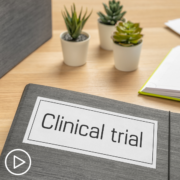How Can MPN Patient Advocacy Groups Help Patients?
How Can MPN Patient Advocacy Groups Help Patients? from Patient Empowerment Network on Vimeo.
What are some ways myeloproliferative neoplasm (MPN) patient advocacy groups can help support patients? Expert Natasha Johnson explains different ways that advocacy groups can help MPN patients in their care, her experience with advocacy groups, and other health professionals who can aid in patient support.
[ACT]IVATION TIP
“…look out for and research MPN support groups. You can do this under the MPN Foundation, or there are other resources to find a way to attend those. You may get so much information that you were unaware of. And then also keeping in good communication with your nursing team, your healthcare team, and if any problems come up, or great barriers such as financial assistance for medication, reaching back out to the pharmacy or the pharmacist where that was sent through to ask for assistance and help.”
Related Resources:

How Can Myeloproliferative Neoplasm Care Barriers Be Overcome? |

|

How Can MPN Experts Help Inform Patients About Clinical Trials? |
Transcript:
Natasha Johnson:
There are several unsung heroes that work with the MPN population and are just not known, but offer great, great resources and can be utilized. First, I’ll start off saying with, there are foundations, for example, the MPN Foundation where it’s a large patient advocacy group that comes along and they establish support groups all over the United States, and they invite patients and caregivers to come and join, whether in-person or through Zoom. And through those meetings, sometimes experts are brought in and taught. Sometimes the nurses are brought in and taught and just provide resources, education to patients, and also just to help answer questions. Through attending those meetings, maybe you can also get in to see an MPN expert. So I would strongly encourage the use of these foundations and these support groups because these are people, that they’re not in the clinic setting day-to-day.
They may be a patient themself who has had MPN for a long time, but now they’re overseeing and heading up the support group. Sometimes it’s a family member of a patient who’s now overseeing and heading up the support group. Additionally, there are pharmacists who are well-versed in MPNs and the medications and can guide and direct exactly where to go to get help when it comes to financial assistance for treatment. And then, of course, nurses. Nurses are just such a key player here that they take the time to listen and to educate and to answer questions or direct.
And so my activation tip would be to one, look out for and research MPN support groups. You can do this under the MPN Foundation, or there are other resources to find a way to attend those. You may get so much information that you were unaware of. And then also keeping in good communication with your nursing team, your healthcare team, and if any problems come up, or great barriers such as financial assistance for medication, reaching back out to the pharmacy or the pharmacist where that was sent through to ask for assistance and help.
Share Your Feedback
Create your own user feedback survey


















